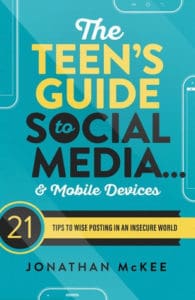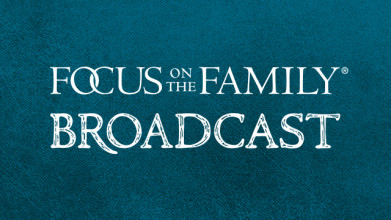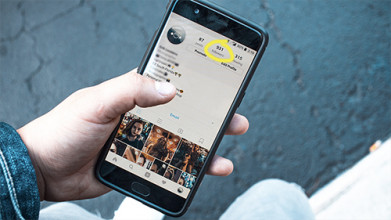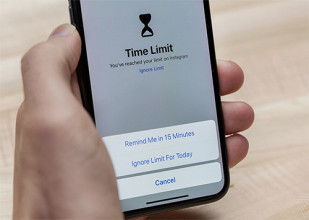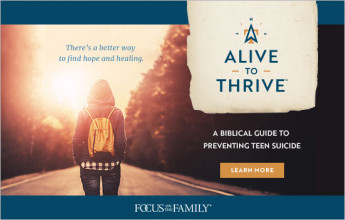Mr. Jonathan McKee: Rules without a relationship are ridiculous because young people are not going to just listen to some drill sergeant barking out certain rules.
John Fuller: That’s Jonathan McKee, and he has more insight to share today on Focus on the Family. Your host is Focus President Jim Daly, I’m John Fuller.
Jim Daly: Jonathan McKee is one of our favorite experts when it comes to dealing with teens and tweens, and in fact, he is one of our Focus on the Family associates: which means he is a trusted experts working with us on topics that impact families today. Jonathan has over 20 years of youth ministry experience and has written several books related to the challenges teens face, including The Teen’s Guide to Social Media and Mobile Devices. Every parent needs that, I’m telling you.
John: Indeed, yes.
Jim: Today and next time we’re going to listen-in on one of Jonathan’s most popular workshops, with lots of details that parents need to know about teens, screens, apps and more. And if you’re thinking, “well my kid doesn’t have a phone,” or “their phone doesn’t have apps” — stay with us – Jonathan will also talk about music and movie choices, plus he’ll reveal ways that even the most protected child might be exposed to questionable images. You don’t want to miss it.
John: Here’s Jonathan McKee, speaking at Castle Oaks Covenant Church in Castle Rock, Colorado on Focus on the Family.
Jonathan: You guys, thanks for coming out here. I’m Jonathan McKee. And tonight, we’re talking about parenting the smartphone generation, parenting ‘generation screen’, parenting young people who can’t pry their eyes from their devices. And man, as you guys know, this isn’t just talking about teenagers here. This isn’t just talking about tweens. Young people are getting gadgets younger and younger. And we’re starting to see a lot of younger people wanting devices, and so this is an issue that’s affecting parents of young kids. This is affecting parents of teenagers. This is affecting grandparents – I meet more and more grandparents now who are raising their kids who are highly involved in this. So, this is really exciting. I’m really glad you guys are here so we can dialogue about this and talk a little bit about this.
Um, I have three kids of my own. And I tell you this has been a journey for me because let me tell you. When I – when my kids were growing up – my kids are now 21, 23, 26. They literally were in high school as the smartphone was being released and as their friends started to get ’em. And all of sudden, I started to hear the – “Dad, can I have an iPhone? All my friends have an iPhone.” And this has just been a funny journey because, for me, very often, I remember – you know, I would sit, and I would start talking about – “Well, here’s – here’s my concern.” And they’d be like, “Well, Dad, you don’t know. You didn’t have a phone.” And I’m like, “What do you mean, I didn’t have a phone?” I’m like, “I had a phone. All right? OK?” And the biggest complaint, the funniest thing – and many of you guys remember this, too – biggest complaint in our house growing up was, ‘get off the phone.’
So I guess a lot hasn’t changed in that aspect. Just what phones we’re actually using has actually changed. And that is because now these phones have so much more available to them. And this is one of those things where I think that a lot of parents just even feel overwhelmed because a phone barely is used to actually call people anymore. You know, we really should talk about ‘devices’ because of what we’re able to do. And the crazy thing is here we are. And as we see here right now, um, pretty much in America smartphones have been in our pockets for about seven years on average because it was 2012 when America crossed the 50% mark for having these devices in our pockets. And literally, when you compare and you look at and there’s these studies that Commonsense Media just did a study last fall where they’re comparing, what are the favorite apps young people are using? And how, you know, many young people actually have these devices?
And back in 2012, only 41% of 12- to 17-year-olds had devices. Where now 89%. I mean, think about that. Eighty-nine percent and this is one of those things where, we as parents, a lot of us, we might have heard those regular complaints where we hear our kids come home and be like, “Mom, Dad, ALL my friends have a phone,” right? And now you guys know that you can say, “Uh, actually, correction – 89% of your friends actually have a phone,” right? You know, and that what you could tell them? Well, this is one of those things where um, we, um, you know as dialogue with them about what this is because I mean, 89% – excuse me. That’s a big number. And we’re also noticing that kids are getting these devices younger and younger.
For example, uh, the average age right now that a young person gets a smartphone is 10.3 years old. And that’s just a smartphone. A lot of young people have these other devices before then. And sadly, most these devices make it to the bedroom every night, and they’re used to it. And let’s be honest. As parents, sometimes, isn’t it easy if we’re driving and we’re on a long journey – you just hand your kid a device, and they behave a lot better, right? So that’s what we do. So, it’s no surprise that when they get older, of course, they’re still looking at these devices. This is one of the struggles. I’m on campus once a week, um, and, constantly, principals and teachers – they’re dealing with this. They’re like, “OK. So what do we do? Do we allow these in the classroom? Should we actually ban them from the classroom?” And it’s amazing because when I’m on campus and I see kids before school, they’re actually all just sitting there staring at their devices, OK? And then as soon as school starts, they have to pocket those devices. So, they go from, all of a sudden, staring at their devices to putting them in their pocket. And all of a sudden, it’s like the sun comes out. And they’re all talking with each other. And it’s this weird thing that happens.
And I think a lot of young people are starting to figure it out. But they’re not ready to discard these devices. Oh, no way, these devices are important. They document everything they do in their lives because, “Hey, I’m having fun. Let’s go ahead. And let’s – you know, let’s document this moment and share it for others to see.”
As a matter of fact now, whenever we go places, very often, we want to, of course, you know, share that moment with others so others can enjoy it. Um, but sadly, this has kind of an interesting side effect. And that is, there’s all these studies out there that are showing that, for a lot of young people, when they stare at a screen, it’s within three minutes, they’re kind of depressed because they’re like, “Oh, look. This friend got a new puppy.” “Oh, look. This friend got a new boyfriend.” “Oh, look. This friend’s on vacation.” “I don’t have a puppy, a new boyfriend. And I’m not on vacation. My life sucks,” you know? And so it’s amazing how we’re starting to see this affect happiness in young people, believe it or not.
Now, of course, the younger that people get devices, the earlier they start on this. So when we’ve got young people starting with selfies and getting used this, is it no surprise that, as they get older, they’re also taking selfies? Here’s the scary thing. The scary thing is whenever we post this stuff – the thing that happens is there’s this waiting period where, once we post something, we all do something. We all wait around for that one thing that every single one of us wants. And that is a ‘like.’ And so here’s what’s happened. From 2012 till now, what we’ve seen – is we’ve seen an unprecedented rise in depression among teenagers. Not only that, teen suicide, especially among teenage girls, is at an all-time high right now. And every expert who’s looking at this stuff and talking about this stuff from Dr. Jean Twenge who wrote the book, iGen, to I mean, honestly, across the board when you talk with American Psychological Association, American Pediatrics, I mean, you constantly, report after report, I don’t think there’s been a report out there on depression that does not at least mention a smartphone, if not, like Dr. Jean Twenge, think, “Hey. It IS the smartphone.” As a matter of fact, the summary of Dr. Jean Twenge’s book, iGen, is pretty much this” “The more time young people spend on social media, the more depressed they are.” It’s that simple.
And, you know, it’s not hard to believe because if you spend some time kind of going through and seeing what young people are posting about themselves, very often, there’s kind of almost this implied, “Look at me.” This isn’t just girls. This is guys as well. It’s this kind of, “Hey, do I measure up? Do you like me? Please, like me.”
Now, we seen a small number of young people actually go to some kind of extremes to be liked. We’ve seen them do some crazy stuff, light themselves on fire. There’s these crazy challenges that come out, that some of them are dangerous, and you hear about them. Um, for example, this picture right here, sadly, this young girl, after she shot this picture, we have to highlight that, she actually fell to her death.
But I tell you, um, by far the most commonly dangerous part of this device is when we allow our identity to be tied to what people think of us on this device. In essence, this device has become this little barometer of self-esteem. It’s this little device that tells us exactly how many friends we have, exactly how well we’re liked. And so for many, it’s become, you know, the thing that we get kind of caught up in and our self-esteem gets tied up in. And that’s why so many people are saying, “Hey, guys. You know, don’t rush to go get your kids these devices. Don’t rush to get your kids, you know, on social media.” And as many of them are starting to think about some of the realistic boundaries that are probably good for our kids, it’s all because of this – is because we don’t want to see our kids become obsessed with these.
And I want to give you seven, uh, parenting practices that I’ve found have been very helpful for moms, dads, grandparents, people who are raising this next generation.
No. 1, connect with your kids face-to-face. And this is the one that I want to emphasize so much because what ends up happening at a parent workshop like this is sometimes kind of reflexively what happens is, when we come to a parenting workshop like this, maybe we’re looking for answers. Maybe we’re looking for that perfect boundary. Maybe we have specific questions. “Hey, if I leave my boy alone tonight, probably tonight while we’re at this parent workshop, what’s he doing? He’s playing Fortnite. And if I don’t put any boundaries on him, he’ll play it all night long.” That might be our specific question. Or might – our specific question might be, “Hey my daughter’s on social media on these, you know, I actually told her not to be on certain ones. And she has devices I don’t even know about that I forgot that she had like an old iTouch that I forgot can download apps. And she’s using that to get some of these apps that I didn’t even know about. And I don’t know how to respond.”
And so often we, as parents, we might have these very specific questions. And, especially, if kids are kind of testing us, what we tend to do is we tend to overreact. And we want to find the perfect boundary.
And here’s the interesting thing. When it comes to teaching our kids how to use these devices ’cause think about it – that’s really what we want to do. Oh, I assure you. When your kid’s 18, when they’re in an Army barracks or they’re in some dorm across the country, they’re not going to call you up and ask you if they can download an app. They’re gonna do it. And the only question you need to ask yourself is, have you prepared them for that day? And, you know, where values are passed on? You know where these teaching moments happen? When we connect with our kids face-to-face.
I’m not saying that boundaries aren’t important. I’m actually today going to list some – here’s some of the boundaries that experts talk about. But you know what? Rules without a relationship are ridiculous because young people are not going to just listen to some drill sergeant barking out certain rules. Many of them are just going to figure it out for themselves. So we need to get with our kids face-to-face and hang out with them and build a relationship with them because, honestly, it’s through these meaningful conversations where very often values are passed on. Think about it.
A lot of us think, “Hey. I want to raise my kid, right?” So that’s why we’re strict, right? So we have all these rules so that we can teach them the ways. Teaching is done through conversation, not through curfews. OK? Curfews might be helpful. I’m not saying they aren’t. Many of these boundaries are very good. But it’s through these times hanging out with our kids that a lot of these values are passed on.
Here’s the interesting thing. Some of the things that we are concerned about right now, our kids are actually concerned about as well. Pew Research actually did a study where they asked a bunch of teenagers and a bunch of parents their opinion on screen time and so many different things. It was interesting. Teens actually admitted, 65% actually wished they were better able to limit the amount of time they spent on their phone. Sixty-nine percent would like to spend more time socializing face-to-face than online. Now, think about that for a second. That’s over two-thirds of 12 through 17-year-olds say, “Man, you know, I’m not ready to throw my device away. But wouldn’t it be cool if, you know, I had more face-to-face conversations instead of screen-to-screen conversations?” This is an opportunity for us. This is an opportunity for us to make sure that we make that an important part of our parenting.
John: Some great advice from Jonathan McKee on Focus on the Family. And you can get Jonathan’s book, The Teen’s Guide to Social Media and Mobile Devices, for your own family when you make a gift of any amount to this ministry. call with your monthly pledge or your one-time contribution – 1-800 the letter “A” and the word FAMILY. 800-232-6459, or donate and request that book focusonthefamily.com/broadcast.
Let’s go ahead and hear more now from Jonathan McKee.
It’s funny. I read a bunch of different parenting reports. There’s probably some weeks where 20 different studies come across my desk, um, from all kinds of different sources talking about what works and what doesn’t work in parenting. Here’s the interesting thing. When it comes down to parenting, there’s bonding and boundaries. Boundaries – nobody agrees. Be more strict or be more lenient. Here’s some good rules. But it’s funny whenever somebody shares boundaries, people automatically go, “Oh, no. No. I do it like this” because everybody disagrees when it comes to boundaries.
But you know what’s interesting? In every single one of these reports I read, everybody agrees when it comes to bonding. Everybody agrees when it comes to the importance of hanging out with our kids one-on-one and engaging them in meaningful conversations. I see that common denominator in almost every one of those reports.
It’s interesting. There was another report written, mm, a few thousand years ago. Here it is, Deuteronomy 6:7. Listen to this report about parenting. “Hey. Don’t just impress this on yourself. Impress and we’re talking about what God did for us here. Impress this on your children. Talk about it when you sit at home, when you walk along the road, when you lie down, when you get up.” In other words, talk about this stuff all the time with your kids.
So look for these opportunities. In a world where young people constantly have devices in their hands. I encourage you. When they got something else in their hands like greasy pizza, what a great time to start talking with them because they can’t get on their stupid phones because their fingers are greasy, all right? Some of them try. But, you know, find these moments. Find these communication arenas where we can do this because in the parenting – and, basically, in, today’s parenting world, both boundaries and bonding are both important.
Well, let me tell you how – one thing that can really help you.
That is No. 2. Go and write this down. Notice their world. One of the ways that really helps us connect with our kids face-to-face is when we take the time to enter their world. We’re raising a generation who is kind of used to we, as adults, being on our screens a whole bunch. As a matter of fact, if you look at our typical home today in America, you got Dad looking at a big screen on the wall, mom scrolling through a social media feed, son up playing some video game, daughter on social media in her bedroom. The toddler’s even flipping little digital shapes across the family iPad. And the dog’s on the treadmill because no one will walk him. All right. This is the typical home in America. And sadly, um, young people are growing up realizing, hey, you know what? Everyone’s looking at screens. And so we got a lot of young people basically entering this world where they’re doing who knows what on their screens at night in their bedroom? How many times do you see kids with headphones on, right?
And for a lot of us, as parents, it would be good for us to kind of see, hey what is it? You know, what is it that they’re actually, you know, listening to. What are they watching? What apps are they using? And so if you’re a mom or dad and you’ve got kids in a home right now, I encourage you to take notice of what apps they’re using. If you see them using an app, you don’t have to be a parole officer and say, “Hey. Right now – front and center – I want to see.” No, but maybe just, like, “Hey, what is that? Show me. Show me how to use that – I’ve heard a lot about that Instagram. Tell me about it. I don’t know anything about it, you know? What’s this TikTok? What is this? Show me.” It’s good for us to know. And so as we start observing, you know, certain apps that our kids are using or not using, go up and ask them about it.
Um, let me tell you. For a lot of you guys, you’re getting an A in this department already because the fact that you are here on a weeknight at a parent workshop – you’re probably here because you want to know a little bit more about what’s going on in the world of youth culture and what’s going on in the life of your kids. And I’ll tell ya, one of the things that – if you just even start reading a few articles about social media and the effect of social media on young people, you’re going to realize what kind of a weird situation we have going on in our country right now. And what that is, is that we have now created basically a system where young people all want one thing. We all want, you know, more friends, more followers, more likes. So think about this for a quick second. Young people’s self-esteem is almost dependent on how many friends they have, right? So now ask yourself. Are they going to be more likely to say “yes” to some anonymous person requesting to be their friend? Well, of course, yeah because they want more friends. Their self-esteem is based on how many followers they have.
You know, many young people I meet now that want to be an Insta-celeb? You know, I remember, you know, when I was a kid, it was like fireman, policeman, whatever. I hear so many people. They’re like, “Oh, no. I’m going to be a YouTube star. I’m going to be an Insta celeb.” And this is kind of now a thing.
But it’s all based on how many likes and followers you have. So now picture this. Picture your daughter. She’s there. And she gets, all of a sudden, a request from this guy right here – OK – who’s saying, “Hey. I’m from this campus across town. And I’d like to be your friend.” And she thinks, “Well, this guy seems pretty nice.” And so she friends what she thinks is this guy. But really, it’s this guy, and she has no idea. Yeah. I know. That was pretty scary, wasn’t it?
And see there certain apps out there that are really good about this because now we live in a world where all of sudden, young people are starting to see, you know, “Oh, wait. I can get in trouble with what I post online? I can get in trouble with”, “Well, I know. Why don’t I get on one of these apps where what I post just disappears, and all my problems will go away?” And I’ll tell you. Right now, for young people, Snapchat is still the favorite, especially in middle schools. You get the high school, you start to see ‘Insta’ go up in popularity, but currently, Snapchat is huge.
And the interesting thing is Snapchat is this thing that also emerged right around 2012, right as America just, you know, crossed the majority of Americans having social media in their pockets. And it kind of presented itself as this app where, “Don’t worry. Everything disappears. So post what you want.”
Well, I would just ask kids an honest question and go, “‘Oh, it disappears, huh? Does it? Does it really disappear?” because every single young person knows that there’s very simple ways to grab those images.
A matter of fact, most people know that if somebody sends that image, and it’s going to disappear in seven seconds or however many seconds the easiest way to grab that image is to what? – screenshot it. Yeah. Absolutely. Everybody knows that. And when Snapchat came out, even if you missed that opportunity to screen chat….to screenshot, there was actually software you can buy in the Apple store where you could download pictures that were saved in the cache or your phone. Like, “Don’t worry. You can get these.” So literally, Snapchat got a hand slap by the FCC saying, “Hey. You guys are kind of misrepresenting yourself saying, “Oh, you know, these pictures disappear.” And, literally, they made Snapchat and make some changes. That was when, all of a sudden, the message, uh, emerged where “your image has been screenshotted”, which, by the way, if you now Google you can find out how to make sure that that message, you know, doesn’t show up.
I mean, so this is one of those things where every expert out there is sitting there saying, “Hey, you know what? This isn’t good.” We’ve got young people who are kind of almost ignorant of the fact that everything you post on the Internet could come back to haunt you. And you probably don’t want to post anything that your mom, dad, future boss, Jesus, could see (laughter) because this stuff doesn’t all disappear.
Another concern about Snapchat, for example, um, is this thing called Snap Maps, which Snap Maps has only been around for honestly, Snapchat’s been around since 2012. Snap Maps has been around a little over a year. And it’s this thing where you used to be able to pinch the screen. Now I think you just swipe up. And also, now you can see all your friends on a map. Now, think about this. Remember. We live in a world where young people want more and more friends because that’s where their self-esteem, you know, gets from. They’re a little more loose with who’s following them. And remember that guy I showed you the picture of?
He’s now your daughter’s friend, right? And now if they have Snap Maps, and if they opted into Snap Maps, and how many kids have actually gone and go, “Hmm. Let me go into my privacy settings and make it to where only my family and my mom can see where I am”? Nah, not really. And you might want to think if your daughter or son has a Snapchat, have they opted in to Snap Maps? Have they ever set those privacy settings? Because, if not, every single one of their friends can right now, you know, pull up the map and see exactly where your son or daughter is right now, actually street address and pull right up there. So it’s good for us to know a little about this. You know?
So many of our kids want Instagram or are on Instagram. And again, Instagram, I’m not here to tell you, “All these apps are bad, and throw away your phone. It’s an evil to” – no. Instagram. Instagram is great. You might even have a church Instagram account that, you know, your church post pictures of the last, you know, church potluck. You know, you got to have that picture of Aunt Bea’s pork and beans. All right. I mean, we do this. This is what Instagram is for. But it would be good for us to have conversations about Instagram because just like you wouldn’t throw your kid the car keys when she’s 12 years old and say, “Good luck.” In the same way, we shouldn’t just hand our kid her phone and be like, “Good luck.” We should actually navigate this with them a little bit and help them and help them.
So take notice of what they’re – what apps are using. Uh, be involved in their life on this. Also, take notice of what they’re soaking in because this same device is becoming so popular with young people that 89% of 12- through 17-year-olds have with them, the smartphone. This device, as you know, has all kinds of cool options to watch movies, to watch TV, to stream shows. If it’s not YouTube, they can stream Netflix. Um, a lot of families have Amazon Prime. So this gives them access to all kinds of different entertainment media.
What about music? I mean, I remember and talk about how fast things change. When I did parent workshops probably five years ago, six years ago, it was all about what songs kids were downloading. Forget downloading. Now it’s all about streaming. We got Spotify, right? And how many kids are like, “Oh. Let me find the clean version of this Bruno Mars song”? No. It doesn’t happen. They just grab the Bruno Mars song, you know? Forget what Cardi B is saying in the song, you know? Don’t want to Google those lyrics. But, you know, it’s one of those things where young people have access to all this right there in their headphones. We, as mom and dad, we should pay attention to this. We should note what they’re soaking in.
And, by the way, don’t take my word for this. When I say, ‘note what they’re soaking in,’ that’s because today’s young people are absolutely saturated in entertainment media. And by most studies out there, how many hours exactly the average for 12- to 17-year-olds is about nine hours a day.
John: That is quite an arresting statistic. And Jonathan McKee has been our guest today on Focus on the Family. What an eye-opener I think, for everybody in the audience and for me as well Jim.
Jim: Boy, John, this is the kind of information that can make a parent want to remove all forms of media, including a phone, from our kids’ lives, but let me just tell you, unless you’re moving to a desert island, you need to know how to work with all of these media influences, and Jonathan will cover that next time.
John: And if you can’t join us then, be sure to visit us online to get the audio and a copy of Jonathan’s book, our mobile app as well. All of that at .Focusonthefamily.com/broadcast.
Jim: And when you’re at the website, look for an extra audio piece from Jonathan on what to do when your child mis-handles their media privileges. I know you’ll appreciate his insights.
And remember, parents, we’re here for you! Focus on the Family is helping over 50-thousand parents every month prepare their children for the next stage of life, like these tricky adolescent years, and I want to thank each and every one of you who donate to this ministry. It is so important to equip parents with the tools they need to raise healthy, Godly young people.
And if you can donate today, I’d like to send you a copy of Jonathan’s book for your young person, it’s called The Teen’s Guide to Social Media and Mobile Devices. It’s a great, down-to-earth book that will give you an opportunity to talk through all of these points Jonathan is raising. And we’ll send that out to you for a donation of any amount, as our way of saying Thank You.
John: Make your monthly pledge or one-time gift when you call 800-A-Family. That’s 800-232-6459 or donate online and request Jonathan’s book at focusonthefamily.com/broadcast.
And if you enjoyed today’s broadcast, please, tell a friend to tune in next time, as Jonathan McKee continues sharing more about your teen’s media choices, including music.
Jonathan: So it’s good for us as mom and dads to know, “Hey. What is this that they’re actually listening to in their headphones?” especially in a world where Americans are listening to 4 1/2 hours a day of music – 4 1/2 hours a day of music alone.










